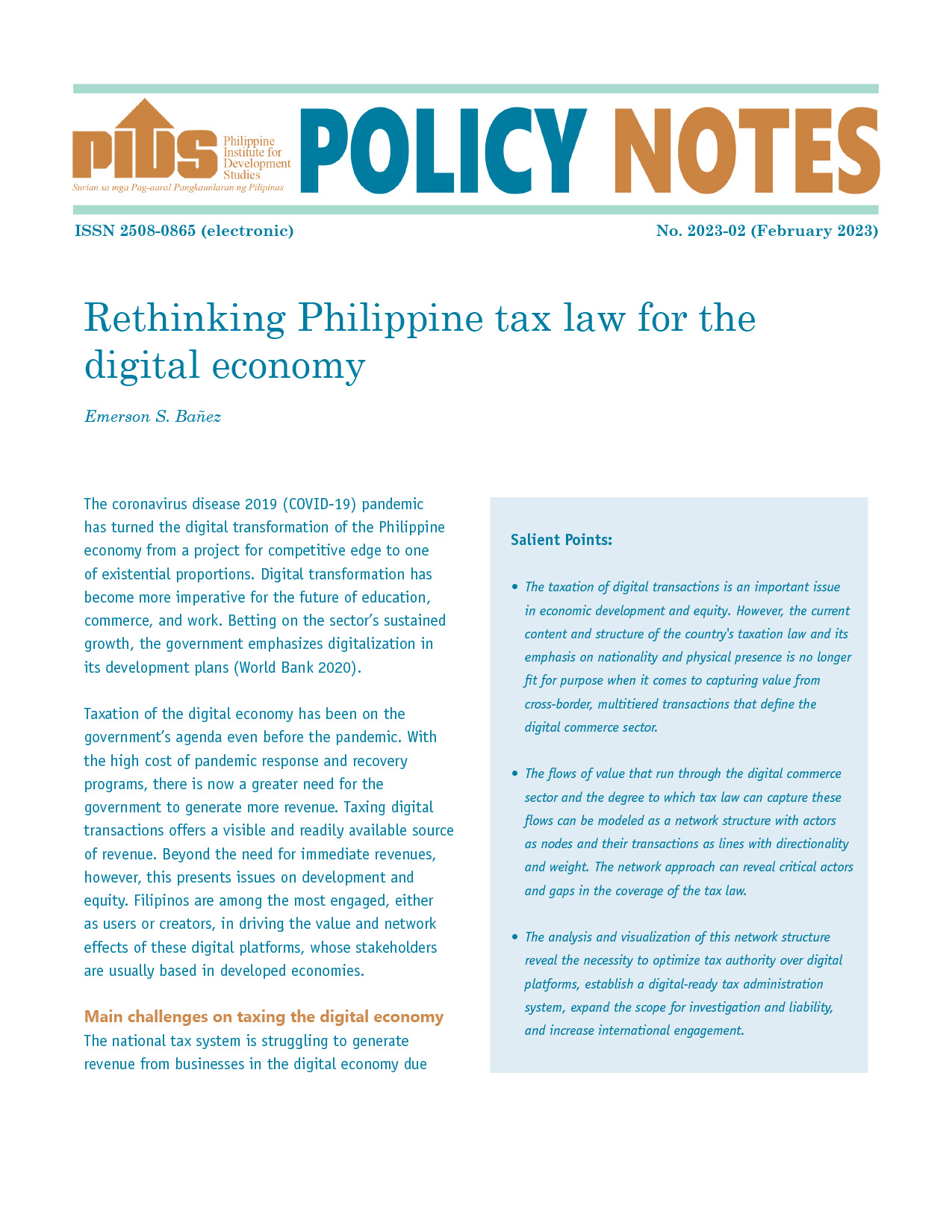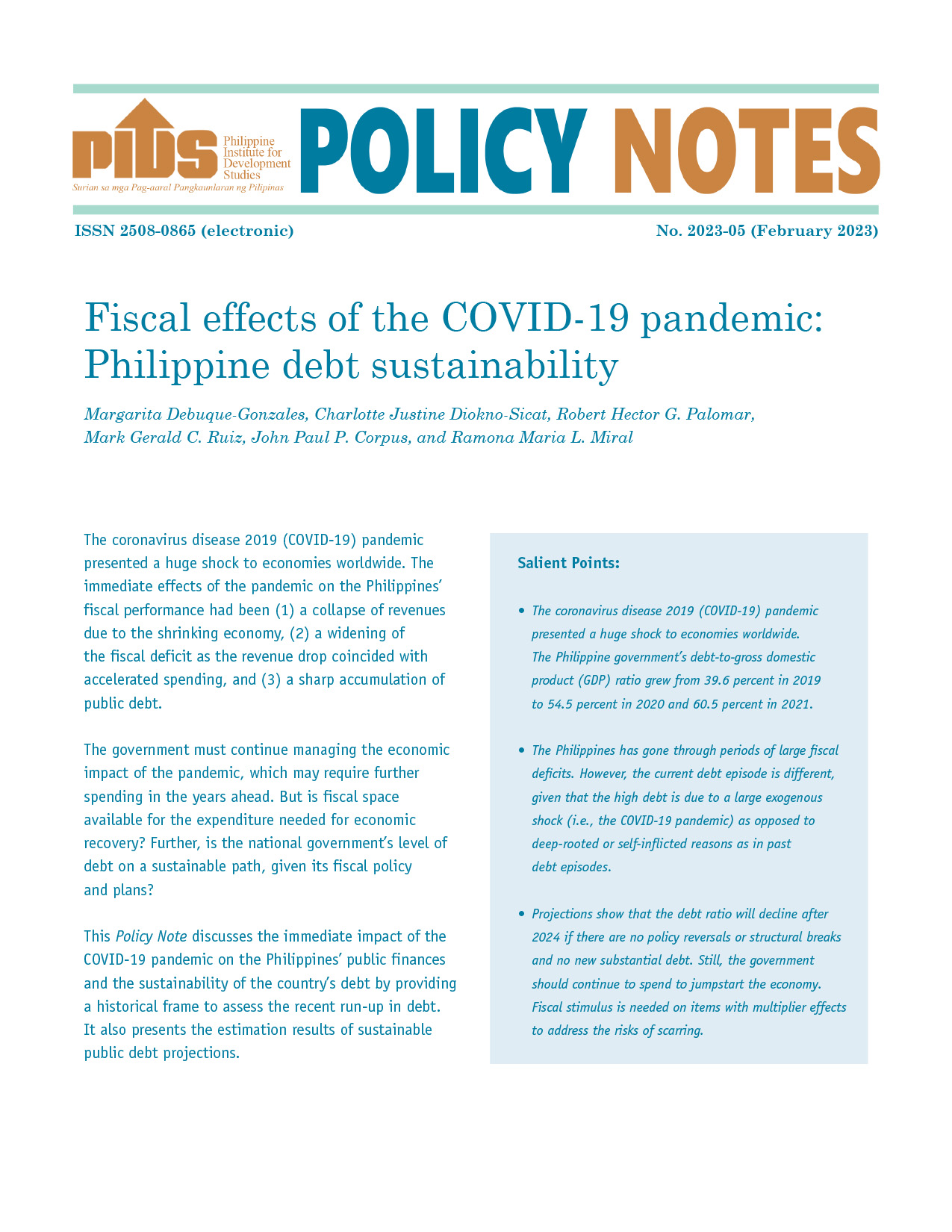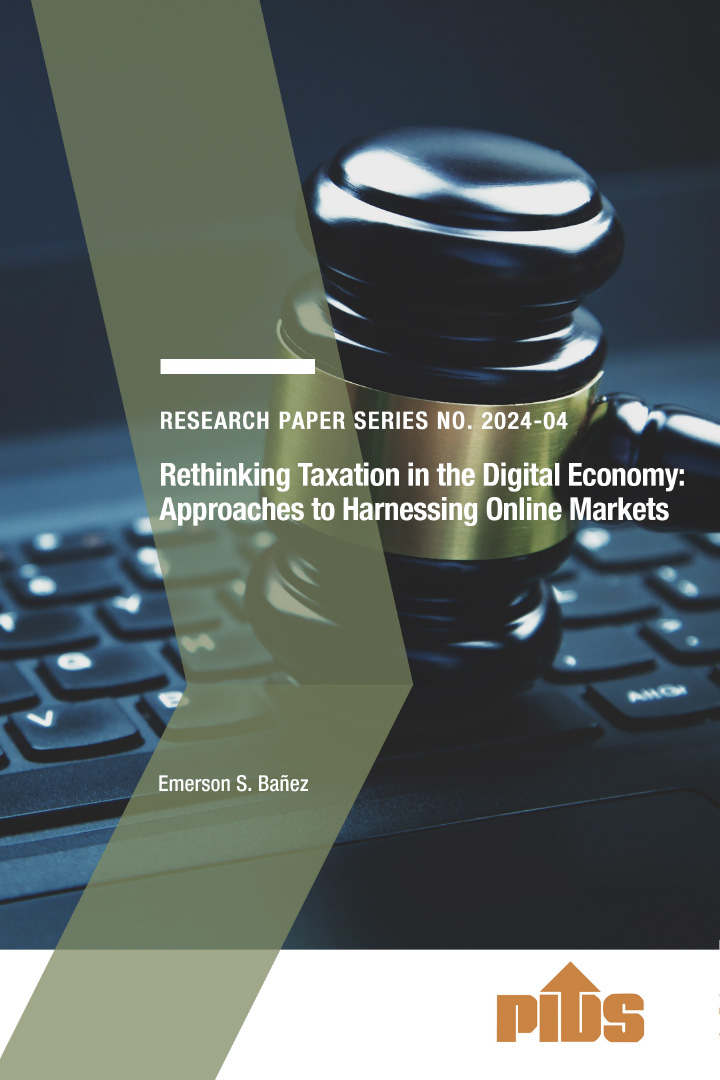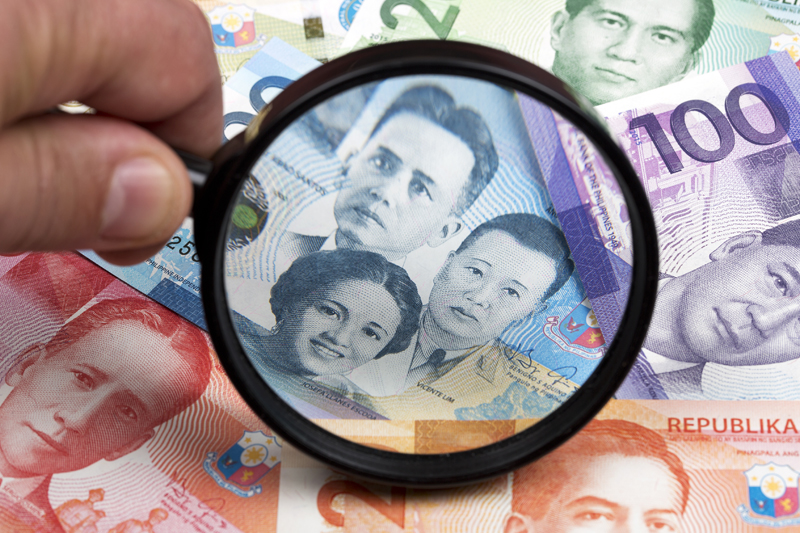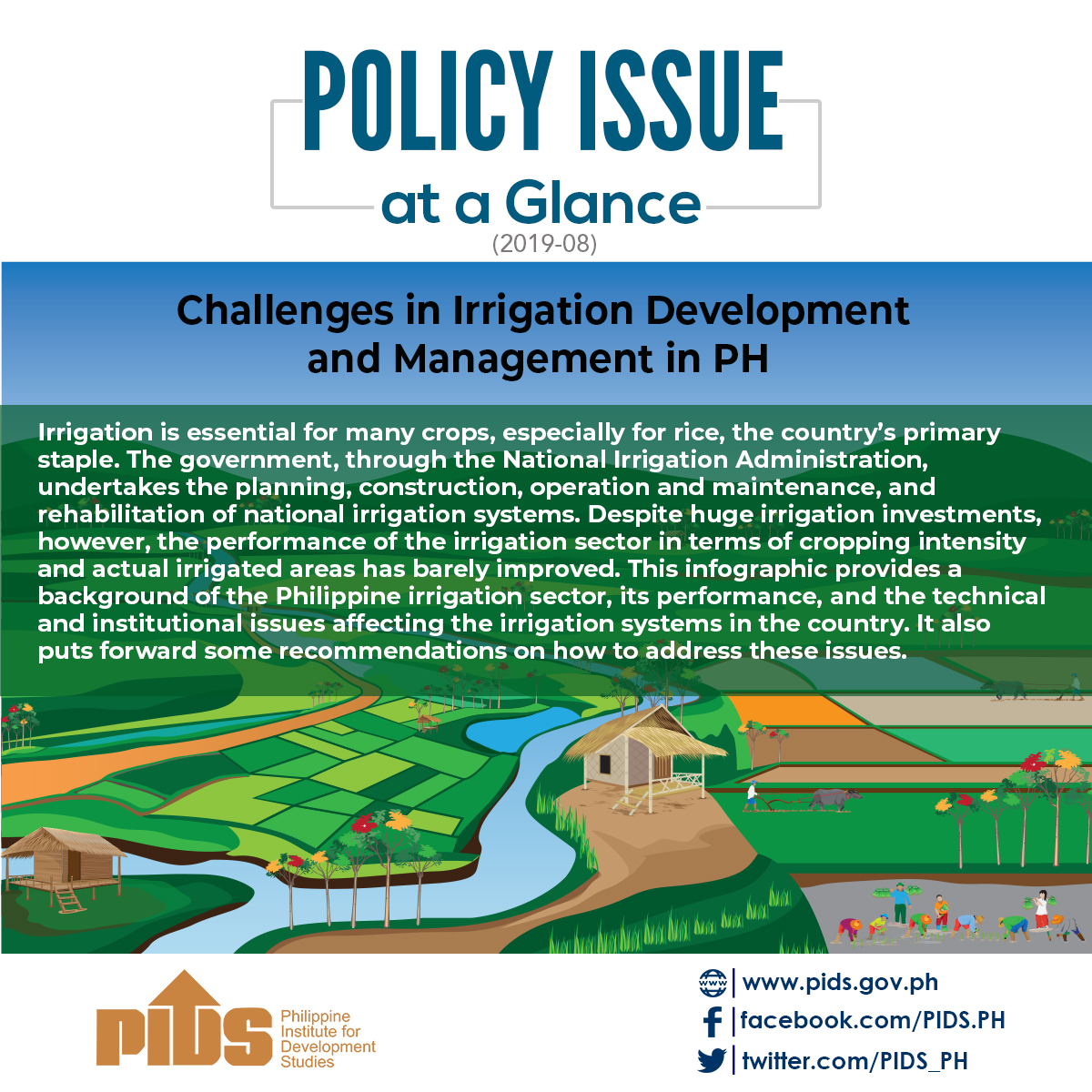The government’s tax-reform program could fall short of expectations due to the lack of incentives for self-employed and professionals (SEPs) to pay taxes, according to a study released by state-owned Philippine Institute for Development Studies (PIDS).
In a paper titled Assessment of the 2017 Tax Reform for Acceleration and Inclusion (TRAIN), PIDS Senior Research Fellow Rosario G. Manasan estimates that as much as P51.3 billion in 2018, P96.5 billion in 2019, P99.9 billion in 2020 can be generated in additional government revenues from the program.
Manasan, however, said these additional funds are only half of government expectations. These funds only account for only 0.4 percent, 0.7 percent and 0.8 percent of GDP in 2018, 2019 and 2020, respectively.
“The high estimates are unlikely to be achieved due to an increased risk of noncompliance among SEPs who are expected to face higher effective tax rates under all three bills in comparison to those under the current system,” Manasan said.
These additional revenues could even be lower if tax collection is inefficient. Manasan said a 5-percentage-point reduction in tax-collection efficiency could cut these estimates by more than half.
Initially, the personal-income tax (PIT) that can be generated from SEPs under the TRAIN is estimated at P74,888 annually. But a decline in tax-collection efficiency could cut this to P32,950 a year.
This leads to lower estimates in terms of additional funds to be generated from the TRAIN to P18.34 billion, or 0.1 percent of GDP in 2018; P63.5 billion, or 0.5 percent of GDP in 2019; and P66.9 billion, or 0.5 percent of GDP in 2020.
“If tax compliance/efficiency in collecting PIT from SEPs deteriorates, the overall revenue take of national government is likely to be considerably lower than these high estimates,” Manasan said.
Further, Manasan added, based on her analysis of the TRAIN bill, or House Bill (HB) 5636, filed at the House of Representatives in May 2017, the tax-reform program could be anti-poor.
Manasan said, if implemented, HB 5636 will see the tax burden of the poorest decile increase by 4.01 percent, while the richest will see a decline of 2.87 percent by 2020 and onward.
In peso terms, this means the poorest Filipinos will be spending an additional P355 a month, or P4,259 a year, for taxes, while the richest Filipinos will see a P2,115 monthly, or P25,386 annual reduction in their taxes.
“HB 5636 is estimated to result in a net-income transfer from households in deciles 1 to 8 in favor of deciles 9 to 10. These findings support the need to compensate the poorer deciles, e.g., the poorest two or poorest four deciles, through targeted subsidies for a three to four years,” Manasan said.
Improving the tax system in the Philippines is crucial since the country’s PIT, specifically, has not been updated since the 1997. This has resulted in what is called “bracket creep”, where low-income taxpayers “hurt more” than their high-income counterparts.
Bracket creep, Manasan earlier explained, has occurred because of the “non-indexation” to inflation of PIT brackets.
This means that the coverage of each tax bracket does not take into consideration the current value of the peso.
Manasan said this presents a problem because the current value of the Philippine peso, using the 2014 consumer price index (CPI), is already less than half of its value in 1998.
This means that an annual income of P210,000 a year in 2014 is only equivalent to P105,000 in 1998. With this, taxpayers earning P210,000 should only be paying P15,500 worth of tax, or 14.8 percent, instead of P40,000, or 19 percent.
Apart from this, new taxes are essential in the government’s vision of ushering in the golden age of infrastructure under the Duterte administration.
Of the 75 flagship projects, some 55 projects are still pending at the Investment Coordination Committee (ICC). But only 33 projects have cost estimates, which amounted to P831.44 billion while the remaining 22 projects still do not have cost estimates as of press time.
The projects pending with the ICC that have the highest costs are the P230-billion-worth Manila Metro Line 9 under the Mega Manila Subway Project—Phase 1 followed by the P72.06-billion-worth Bohol-Leyte Link Bridge, which is included in the Nationwide Island Provinces Link Bridges.
Other big-ticket flagship projects with cost estimates are P57.65- billion-worth Luzon-Samar Link Bridge under the Nationwide Island Provinces Link Bridges program and the P57.6-billion-worth Clark-Subic Railway project.
Among the flagship projects approved by the President, the one with the highest cost is the P211.46- billion-worth PNR North 2 or the Malolos-Clark Airport-Clark Green City Railway project.
In a paper titled Assessment of the 2017 Tax Reform for Acceleration and Inclusion (TRAIN), PIDS Senior Research Fellow Rosario G. Manasan estimates that as much as P51.3 billion in 2018, P96.5 billion in 2019, P99.9 billion in 2020 can be generated in additional government revenues from the program.
Manasan, however, said these additional funds are only half of government expectations. These funds only account for only 0.4 percent, 0.7 percent and 0.8 percent of GDP in 2018, 2019 and 2020, respectively.
“The high estimates are unlikely to be achieved due to an increased risk of noncompliance among SEPs who are expected to face higher effective tax rates under all three bills in comparison to those under the current system,” Manasan said.
These additional revenues could even be lower if tax collection is inefficient. Manasan said a 5-percentage-point reduction in tax-collection efficiency could cut these estimates by more than half.
Initially, the personal-income tax (PIT) that can be generated from SEPs under the TRAIN is estimated at P74,888 annually. But a decline in tax-collection efficiency could cut this to P32,950 a year.
This leads to lower estimates in terms of additional funds to be generated from the TRAIN to P18.34 billion, or 0.1 percent of GDP in 2018; P63.5 billion, or 0.5 percent of GDP in 2019; and P66.9 billion, or 0.5 percent of GDP in 2020.
“If tax compliance/efficiency in collecting PIT from SEPs deteriorates, the overall revenue take of national government is likely to be considerably lower than these high estimates,” Manasan said.
Further, Manasan added, based on her analysis of the TRAIN bill, or House Bill (HB) 5636, filed at the House of Representatives in May 2017, the tax-reform program could be anti-poor.
Manasan said, if implemented, HB 5636 will see the tax burden of the poorest decile increase by 4.01 percent, while the richest will see a decline of 2.87 percent by 2020 and onward.
In peso terms, this means the poorest Filipinos will be spending an additional P355 a month, or P4,259 a year, for taxes, while the richest Filipinos will see a P2,115 monthly, or P25,386 annual reduction in their taxes.
“HB 5636 is estimated to result in a net-income transfer from households in deciles 1 to 8 in favor of deciles 9 to 10. These findings support the need to compensate the poorer deciles, e.g., the poorest two or poorest four deciles, through targeted subsidies for a three to four years,” Manasan said.
Improving the tax system in the Philippines is crucial since the country’s PIT, specifically, has not been updated since the 1997. This has resulted in what is called “bracket creep”, where low-income taxpayers “hurt more” than their high-income counterparts.
Bracket creep, Manasan earlier explained, has occurred because of the “non-indexation” to inflation of PIT brackets.
This means that the coverage of each tax bracket does not take into consideration the current value of the peso.
Manasan said this presents a problem because the current value of the Philippine peso, using the 2014 consumer price index (CPI), is already less than half of its value in 1998.
This means that an annual income of P210,000 a year in 2014 is only equivalent to P105,000 in 1998. With this, taxpayers earning P210,000 should only be paying P15,500 worth of tax, or 14.8 percent, instead of P40,000, or 19 percent.
Apart from this, new taxes are essential in the government’s vision of ushering in the golden age of infrastructure under the Duterte administration.
Of the 75 flagship projects, some 55 projects are still pending at the Investment Coordination Committee (ICC). But only 33 projects have cost estimates, which amounted to P831.44 billion while the remaining 22 projects still do not have cost estimates as of press time.
The projects pending with the ICC that have the highest costs are the P230-billion-worth Manila Metro Line 9 under the Mega Manila Subway Project—Phase 1 followed by the P72.06-billion-worth Bohol-Leyte Link Bridge, which is included in the Nationwide Island Provinces Link Bridges.
Other big-ticket flagship projects with cost estimates are P57.65- billion-worth Luzon-Samar Link Bridge under the Nationwide Island Provinces Link Bridges program and the P57.6-billion-worth Clark-Subic Railway project.
Among the flagship projects approved by the President, the one with the highest cost is the P211.46- billion-worth PNR North 2 or the Malolos-Clark Airport-Clark Green City Railway project.

